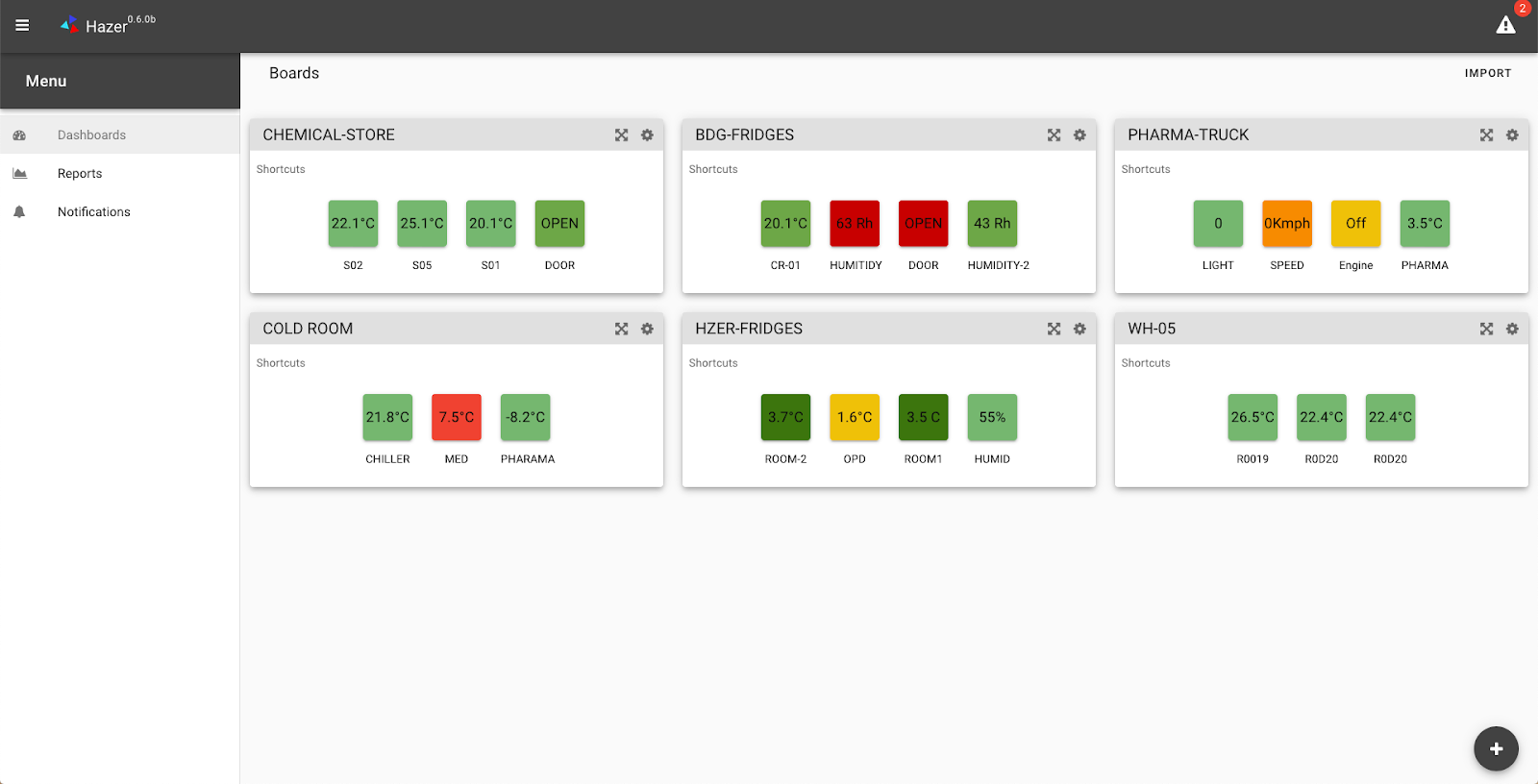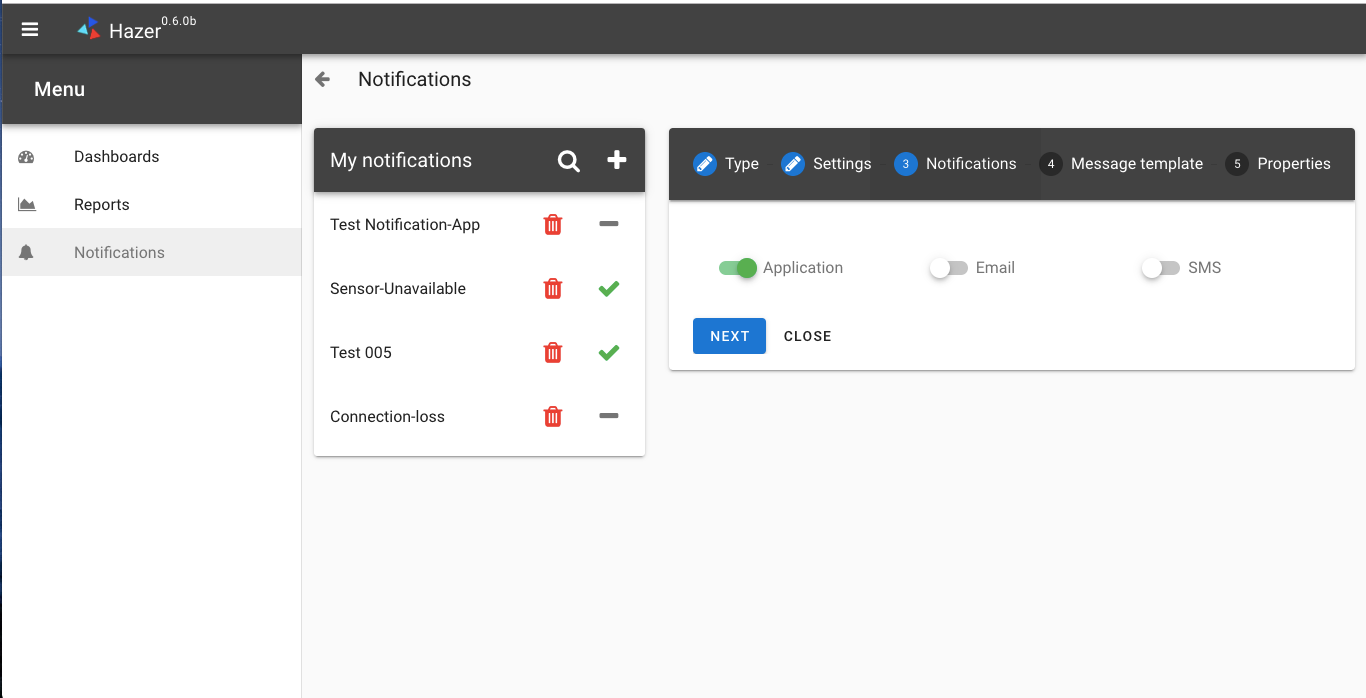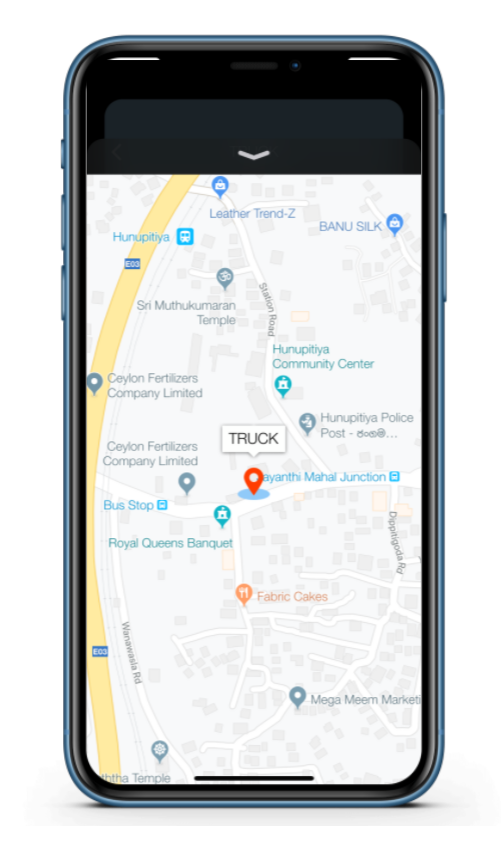More “eyes” needed
Imagine these enormous hangars comparable in size with the soccer fields and packed with all sorts of produce top to bottom. They carry millions of dollars worth of goods — FMCG, electronics, valuable assets, whatnot. Some of these items might be in transit via a given warehouse but might be highly sensitive to the storage conditions. Temperature, humidity, light intensity, doors status, and other factors affect the conditions in different parts of the facility; their deviations from the recommended values can lead to spoilage, damage, thefts, and other losses.
In view of the above, it is crucial for warehouse managers, security, and operators to be able to monitor the conditions throughout the location (which is virtually impossible to do in person) and take immediate action to prevent (or at least minimize) the negative impact.
The guys from KloudIP (Sri Lanka) created a simple yet targeted application — Hazer (iOS, Android coming soon) — that helps create human-friendly dashboards for monitoring and management of any IoT devices — sensors, beacons, trackers, etc.
Hazer look & feel
Hazer allows you to monitor a wide variety of sensors simultaneously in a convenient way. Temperature / humidity / door locks / fuel level / light level / CO2 / Water / Parking — Hazer is ready to deal with literary any sensor you can imagine.
Pretty dashboards
The interface is minimalistic and does not distract from the main purpose — see the real-time values clearly and react accordingly:
You can group the widgets into blocks to organize them logically.
Notifications
Customizable notifications let you receive the timely warnings or alerts and not be constantly checking the dashboard:
Color coding
Configurable color-coding lets you set the colors for specific value ranges and see the deviations at a glance:
Map
If your IoT devices are capable of sending position information, you can show it on the map:
Configuration from QR-code
This feature is really neat — you can share your dashboard configuration and make it available for others to view. The user intending to open the configuration can simply scan the generated QR-code and have the entire dashboard rolled out on their device in seconds:
Based on flespi
Hazer borrows the concept used in flespi’s MQTT Tiles tool — a dashboard getting and sending data via the MQTT broker — and focuses it on solving specific business tasks.
Note: MQTT Tiles is an open-source project, so anyone is welcome to fork it and use it for their needs.
The MQTT broker used is flespi MQTT broker — the one that’s sitting behind the scenes of MQTT Tiles, the one that guarantees instant status updates for Hazer’s widgets, and the one that supports the full set of features of MQTT 5.0 standard.
The MQTT client Hazer uses is CocoaMQTT.
The mobile app for iOS is being developed using popular Swift and kotlin programming languages.
And the maps engines used are Google Maps and OSM.
UPD Feb 2021: Hazer 2.0 released
The KloudIP team has ambitious plans for further development of Hazer:
Unified Backend — Web and Mobile apps will be synchronized, meaning that changes made in the Web version will be automatically synced on the Mobile apps (and vice-versa)
Remote control of telematics devices — action elements such as switches, toggles, and more are already available in Hazer Web and will soon be added for Mobile apps
In-app notifications — Hazer Web already offers voice alerts, email notifications; soon Mobile apps will have push notifications.
Analytics — basic analytics capabilities
Check more details in our dedicated blog post.
***
As you can see, when companies ground on their core competencies — technology and connectivity for flespi and business focus and entrepreneurial spirit for KloudIP — the results come fast and the results last because everyone does what they can do best.
Most industries and businesses will benefit from smart dashboards (warehousing was just an example) — equipping the premises and strategic assets with the IoT devices and tracking the critical metrics will help cut losses, avoid damage, predict outages, and proactively deal with risks.




